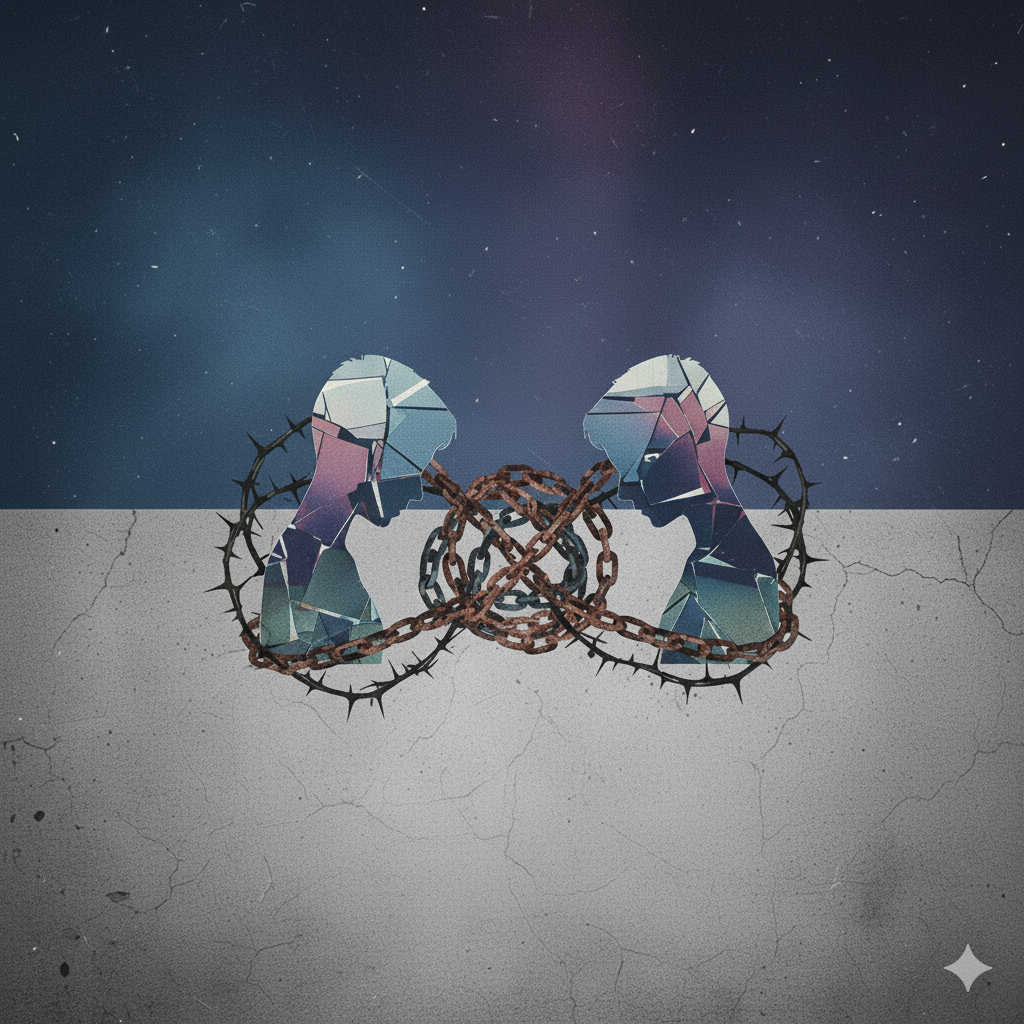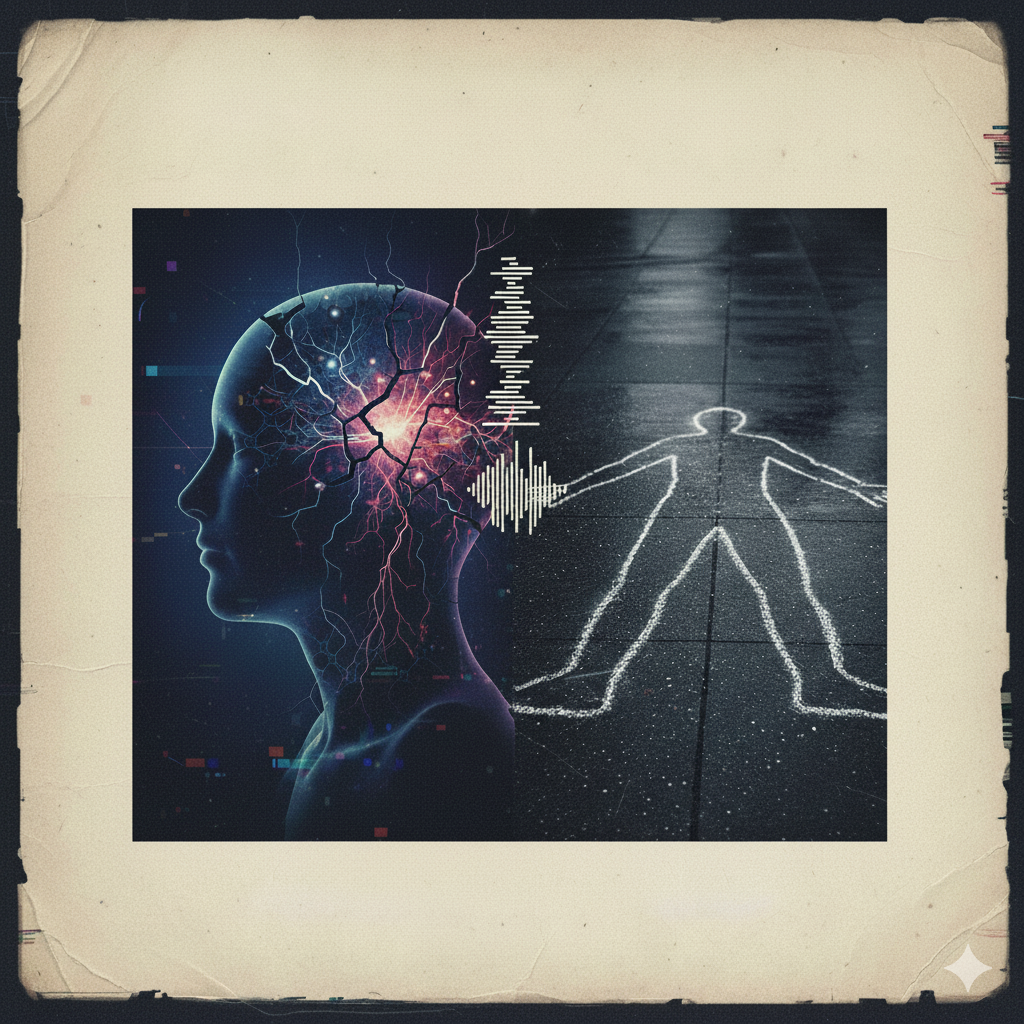Toxic youth relationships: she flees, he fakes. the traumatic trap of toxic love. survey results.
By Massimo Lattanzi¹²³, Tiziana Calzone¹²³
¹Italian Association of Psychology and Criminology (AIPC), Rome, Italy ²Italian Center for Relational Psychotraumatology (CIPR), Pescara-Rome, Italy ³National Observatory on Family Homicides (ONOF), Rome, Italy
Introduction: trauma and Its masks
In the quintessential age of transition, between 18 and 24, managing emotional pain from past trauma takes on complex and often gender-specific forms. The use of compulsive behaviors or substances (generically defined here as "addiction") is almost never random; it serves a precise psychological function.
What is the SVT_AMT Scale The SVT_AMT (Trauma Assessment Scale - Traumatic Self-Medication) scale is a psychological assessment tool. It doesn't just identify if a person uses compulsive behaviors or substances (generically, "addiction"), but investigates why they do it. It is designed to identify the primary psychological function that the addiction serves for that person, dividing it into three strategic areas:
- Area A: Managing anxiety and hyper-arousal.
- Area B: Numbing emotional pain and traumatic memories.
- Area C: Building a sense of identity or managing relational emptiness.
From inquiry to profiles: what the survey reveals
To understand how trauma manifests in young adults, a preliminary investigation (a clinical "survey") was conducted on a sample of young people aged 18 to 24, using the SVT_AMT scale. The results of this survey did not show a homogeneous picture. On the contrary, they revealed a clear, gender-based polarization, highlighting two almost mirror-like strategies of traumatic self-medication. It is from this data that the two profiles at the center of our analysis emerge.
The "WHO HEALS IS SAFE" (CHI SI CURA è SICURA/O) campaign summarizes this urgency: healing from trauma, for both the perpetrator and the victim, is the only path to collective safety.
Contacts and Appointments To find out the campaign schedule, check availability, and book your free appointment, contact the Italian Center for Relational Psychotraumatology. You can attend the consultation either in person (Pescara and Rome offices) or remotely (GoToMeeting platform).
Phone and WhatsApp: 392 4401930 (active every day from 11:00 AM to 4:00 PM)
E-mail: aipcitalia@gmail.com
Pescara Office: Corso Umberto I, 18, 65122 Pescara PE
Rome Office: Via Giorgio Baglivi 6, 00161 Rome RM
Profile 1 (Women, 18-24): The "escape from feeling"
Survey data shows that young women have an average total score of 4.6, indicating that addiction use is not yet central, but is very specific. The correlation with the scale: The key finding is the absolute dominance of Area B (Regulation of emotional pain and memories), with an average of 2.6. What this means: The survey results tell us that these young women use addiction with an anaesthetic function. They are not primarily seeking to calm anxiety (low Area A) or build an identity (low Area C). They use addiction to shut down unbearable pain (memories, shame, despair) and, in effect, to "escape" from their own internal traumatic reality.
Profile 2 (Men, 18-24): The Construction of the "False Self" In stark contrast, the data collected on young men show an average score of 8.2, suggesting an already significant bond and the use of addiction as true self-medication.
Listen to the podcast on the AIPC Editore Channel on Spotify MIND|CRIME|TRAUMA, “Toxic youth relationships: The traumatic resonance between 'escape from feeling' (her) and 'false self' (him) at the origin of the dysfunctional couple”, click the link:
https://open.spotify.com/episode/3Tq7ArFbaaVtA6HrMLOww0?si=YfiT0Ca5RWOesxaCWqxHiQ
The correlation with the scale:
The dominant function detected by the SVT_AMT radically shifts to Area C (Modulation of the sense of self and relationships), which reaches an average score of 3.2. What this means: The survey shows us that, for them, the primary function is compensatory. Addiction is not only used to sedate (Area A) or numb (Area B) – though these are present – but to actively build an identity. It is used to fill a chronic sense of emptiness and inadequacy, allowing for the construction of an artificial "false self" (confident, high-performing) that masks deep attachment wounds.
The dysfunctional fit: traumatic bubble and the partner paradox
What happens when Profile 1 (Escape from Feeling) and Profile 2 (False Self Construction) meet and form a couple? One of the most complex and change-resistant dynamics is structured: the traumatic bubble.
1. The partner paradox: The meeting is not accidental. It is a "perfect" and dysfunctional fit.
- The man (Profile 2) is not looking for true intimacy, but for a mirror to validate his false self. He needs an audience, not a witness.
- The woman (Profile 1) is not looking for true intimacy, but for a relational anaesthetic. She needs a presence that does not force her to "feel".
The paradox is that both get what they consciously believe they want, but which unconsciously destroys them. He is attracted to her apparent "calm" or distance, which doesn't challenge his performance. She is attracted to his apparent "strength" or confidence (the false self), which gives her the illusion of protection and allows her to continue not feeling.
2. The structuring of the traumatic bubble: Their relationship becomes a "bubble" impermeable to emotional reality. It is an unconscious collusion to avoid contact with their respective traumas.
- The performance: The relationship is a performance. He plays the part of the competent and confident man (his false self); she plays the part of the "non-problematic" partner (her numbed self).
- The third party (addiction): The bubble is held together by their addictions. His compulsive behavior is what allows him to sustain the performance; her compulsive behavior is what allows her to tolerate it.
- Absence of real intimacy: In the traumatic bubble, there is no room for vulnerability. Any attempt at authentic connection is experienced as a mortal threat: for him, it threatens to shatter the false self; for her, it threatens to reactivate the unbearable pain.
The result is an "empty" couple, a perfect choreography that masks the absence of two real people, both prisoners of their trauma survival strategies.
Invitation to the seminar: From the science of complex trauma to violence prevention
The Italian Association of Psychology and Criminology (AIPC) and the Italian Center for Relational Psychotraumatology (CIPR) are pleased to invite all professionals residing in Abruzzo who work with violence in various capacities (in particular, Operators of Anti-Violence Centers (CAV)/Centers for Abusive Men (CUAV), Social Workers, Lawyers, Psychologists, Psychotherapists, and Law Enforcement) to the free seminar:
"FROM THE SCIENCE OF COMPLEX TRAUMA TO VIOLENCE PREVENTION"
The event will be held on Saturday, November 15, 2025, from 9:30 AM to 12:30 PM, at the Conference Hall of the Pescara Police Headquarters (Questura di Pescara).
This scientific-operational seminar will explore how Complex Trauma (C-PTSD) is at the root of violent dynamics and how scientific assessment tools, such as the SVITR scale [2025-06-28], can identify risk factors to structure effective prevention interventions. The event is part of the "WHO HEALS IS SAFE" campaign.
Registration and Contacts Participation is free, but space is limited. Registration is mandatory by sending the completed registration form by 1:00 PM on November 11, 2025. Download the Registration Form here: Link to Registration PDF
Conclusion
These profiles, although preliminary, suggest that relational trauma at a young age pushes individuals toward extreme solutions. Understanding that the young woman uses addiction to erase herself and the young man uses it to invent himself is the key to intervention. Addressing these dynamics requires a specialized approach, like that offered by the Italian Center for Relational Psychotraumatology (CIPR). It is not just about treating the addiction, but about decoding its function to access the relational trauma that fuels it, helping these individuals not only to stop "fleeing" or "performing," but to finally begin to live.
Asking for Help: A Possible Path
If you recognize yourself in these dynamics, in the escape from feeling or in the construction of a "false self" to mask pain, you are not alone.
Understanding the function of addiction is the first step to addressing the relational trauma that sustains it.
The Italian Center for Relational Psychotraumatology (CIPR) offers specialized paths in Pescara and Rome to address these complex wounds.
For more information or to book a consultation:
Email: aipcitalia@gmail.com
Website: www.associazioneitalianadipsicologiaecriminologia.it
WhatsApp Phone: 3924401930



